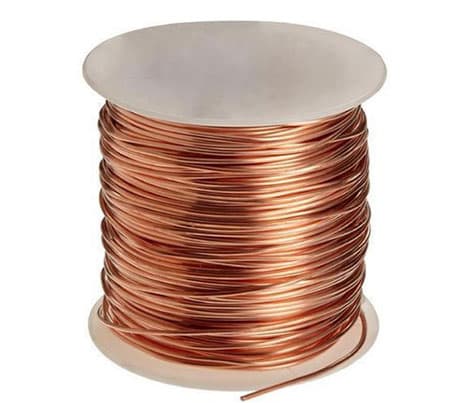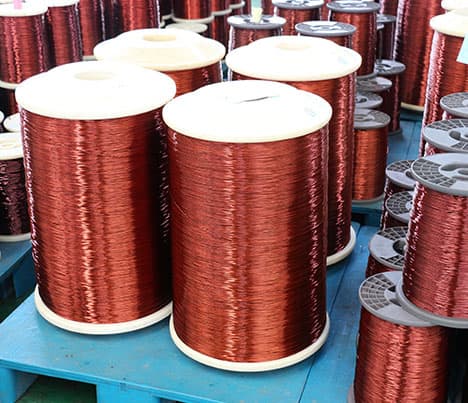What is the difference between copper wire and magnet wire?
Copper wire is a widely used standard type of wire, It has a very low resistance (ohms/foot). This allows it to carry higher amps with out getting to hot. Ohms/foot is a however a negative effect. Regardless, read on.
However, Bare copper is used in electrical wiring & connections including grounding / earthing.
Magnet wire shelf life is not established in commercial specifications. As long as the wire has been carefully stored it may be usable for years to come. Bondable wire should not be stored at temperatures exceeding 100°F. Electrolytic tough pitch copper (ETP Copper, UNS C11000) exceeds 99.9% purity and is the most widely used type for magnet wire production. It is intentionally oxygenated (200-400 ppm) to achieve the best combination of conductivity, capacity for being cold worked and economy. LP Industry can also supply wire made from high purity (99.95%) OFHC Copper (UNS C10200) or Certified (99.99%) OFHC Copper (UNS C10100).


Magnet wire is also called winding wire. There are a number of film insulation types ranging from temperature Class 105 to Class 240. Each film type has its own unique set of characteristics to suit specific needs of the application.
Copper Magnet wire is used in motor windings, transformer windings, induction coils, The insulation may be a thin film of varnish called enamel, a fibrous polyester or fiberglass yarn; or a combination of both enamel and fibrous insulations. The fibrous insulation may be impregnated with a varnish to bind the insulation to the conductor and enhance thermal endurance. If it is bare copper then, windings will result in short circuit, so an enamel coat is applied which acts as insulator & makes winding possible. This is done by making the copper dip in to enamel solution as it is “drawn” to required thickness / diameter and allowed to cure. Such enamelled / insulated copper wire is called magnet wire.
Maxwell showed us that when wire is wrapped in a coil the electrons passing thru the wire will create a magnetic field perpendicular to the current flow. The action of multiple windings multiplies the magnetic effect. In physics this is referred to as the right hand rule. A common device using this process is the electo-magnet. An audio speaker is an electro-magnet with a paper cone attached. The music in the form of a varying voltage drives the magnet to move the paper cone, our ears will pick up these audio variations of the air.
